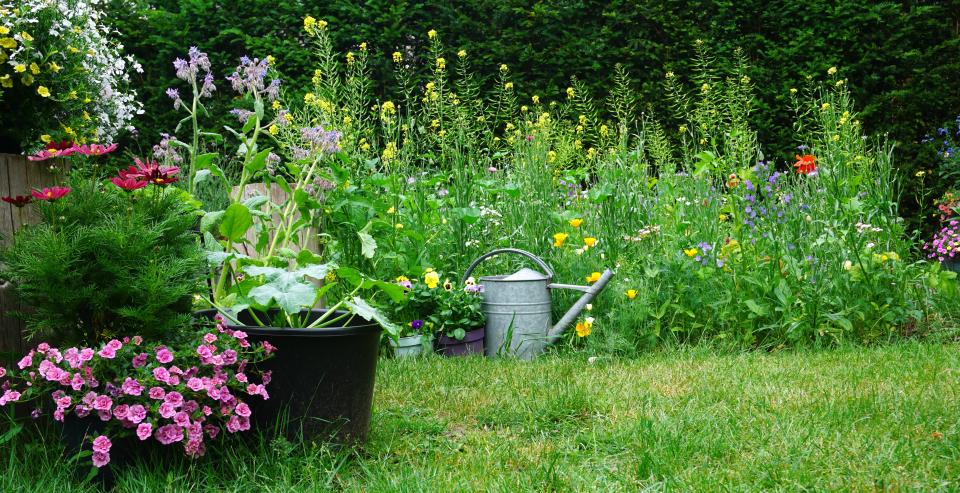National Plant a Flower Day 2024: Celebrate by planting this flower for monarch butterflies
March 12 is National Plant a Flower Day, and folks can celebrate it by planting some milkweed and starting a pollinator garden to help the dwindling numbers of monarch butterflies.
An annual survey from the World Wildlife Fund, WWF, found that the insects' population crept down to the second-lowest number on record. While the butterfly wintered in Mexico, the organization found that the eastern monarch butterfly colonies took up 2.2 acres of regional forests. That's 41% of what they occupied during the 2022-2023 winter season.
Around a year after the orange and black butterfly was taken off the endangered species list, the International Union for Conservation of Nature opted to change the butterfly species' status to vulnerable.
"Fewer monarchs hibernating in their traditional forest habitat in Mexico greatly concerns all of us," Jorge Rickards, general director of WWF Mexico, said in a statement. "This is not the first time we've observed changes in the locations of the largest monarch colonies."
A gardener's enemy: Why gardeners should be aware of false spring
National Plant a Flower Day: Help monarch butterflies with a pollinator garden

Despite the bleak numbers, there are ways everyone can help the butterflies regain their population, and folks don't even need a backyard to do it. Just some dirt, seeds and a few pots.
"Most of the country falls in the monarch migratory pattern range," Deborah Seiler, the Xerces Society for Invertebrate Conservation's communications director, told USA TODAY. "It's a species where almost everyone has an opportunity to help."
The Nature Conservancy says one of the best things folks can do to support pollinators, in general, is to create a pollinator garden.
By starting one of these gardens with milkweed and native wildflowers, you essentially create a smorgasbord of delectable treats for any pollinator, like bees, hummingbirds and other butterflies, but especially the monarch butterflies.
It's an all-you-can-eat buffet of nectar that will help support this delicate butterfly on their treacherous journey.
The best part is, a backyard isn't even required. With some pots, dirt and seeds, folks can start a container garden on their balcony, by their front door or even a planter in the window.
On the Xerces website, there are a few resources that can advise gardeners, or soon-to-be gardeners, to the plants they need for their region.
National Plant a Flower Day: Don't use insecticides
According to Monarch Joint Venture's website, an organization that aims to conserve monarch butterflies, loss of milkweed increases the risk of monarch eggs, larvae and pupae being exposed and killed by insecticides. But monarchs face an even higher risk because of the impact insecticides have on insects that forage for pollen.
PBS and NPR's WHYY states that even natural and organic pesticides can harm migrating bugs and other pollen enthusiasts. But if it is absolutely necessary, then it recommends that people should opt for the following instead:
Insecticidal soaps
Horticultural oils
Neem oil
The publication says to apply them only after dusk because that's when pollinators aren’t active.
National Plant A Flower Day: Monarch caterpillars are partial to milkweed
While the Very Hungry Caterpillar may have eaten everything in sight, monarch caterpillars are a bit picky.
Butterflies will only lay their eggs on milkweed, says Seiler. There is a variety of milkweed to choose from, but what may be best for one region may not be native to another.
According to the Xerces Society, folks who live in the southeast part of the country, i.e. Alabama, Tennessee, South Carolina and four other states, should plant butterfly milkweed, whorled milkweed and swamp milkweed. Each one blooms at a different time of year and supports the monarch as they migrate across the country to and from Mexico.
However, the society says folks who live in the Southern Plains, part of Texas, Colorado, Kansas, Arkansas and Oklahoma, should plant butterfly milkweed, spider milkweed and whorled milkweed, which all bloom from spring to fall.
Don't be surprised when the milkweed's leaves start having holes. They're meant to be eaten! It's to make sure caterpillars grow big, strong and fat so they have the strength they need to transform into butterflies.
National Plant a Flower Day: Plant native wildflowers
After all, it is National Plant a Flower Day.
Monarch caterpillars are picky, but monarch butterflies- not so much.
Xerces has a guide on what flowers should be planted and when they bloom based on each country's region.
Having a well-rounded garden that constantly has blooms available for monarchs as they migrate is how one can make sure their garden is constantly providing nectar for the butterflies.
For example, plants like scorpion's-tail and seaside goldenrod grow year-round in Florida. The seaside goldenrod can tolerate sandy soils and saltwater spray, while also being an important nectar source for migrating monarchs.
A plant like this is ideal for the state because it sees the monarchs year-round, while states in the Southeast region mentioned above only see the bugs from April to July and then August to November.
To learn what works best for each region, visit Xerces' website here.
Contributing: Eric Lagatta, USA TODAY
Julia is a trending reporter for USA TODAY. She has covered various topics, from local businesses and government in her hometown, Miami, to tech and pop culture. You can follow her on X, formerly known as Twitter, Instagram and TikTok: @juliamariegz.
This article originally appeared on USA TODAY: National Plant a Flower Day: Celebrate by helping monarch butterflies

